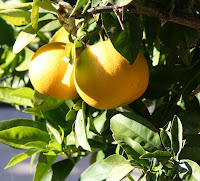Homework
I don't know how many of you check this blog while on break, but for those who do, I have a bit of a homework assignment for you. I found a book given to me by a friend and it had a lot of great information I wanted to pass along, I will cover more in class but this will get you started. This assignment is one that can be done anywhere and every where and you do it every time you open your eyes and that is to "see".
I know that may sound silly but it really isn't from a teaching perspective. If you are going to improve as an artist you need to be able to look at your subject and see all the elements that make that subject appealing to you. Those things include shapes, color, light, arrangement (composition), texture, shadows and reflected light. There's probably something I'm missing but those are the important things that come to mind.
In the past, you have heard me harp on drawing and many of you have taken me to heart and have been working on improving your drawing skills (YEAH!) continue what you are doing because that will help you with this next task, looking for the light, shadows and reflected light in your subject. They all have shape and their shapes helps define your subject.

These oranges are a good example (I'm experimenting here posting picts to the blog). Yes, you see the oranges and the bright light and the shadows but do you see the reflected light? Do you see the change in color on the front orange under the leaf? Do you see the difference between the reflected light in the shadows of the front orange compared to the one behind?
Because of our atmosphere, light scatters. It will hit an object then bounce back and reflect a bit of the color from the thing it has bounced off from. In the front orange the reflected highlight is cooler than the reflected light on the one behind because the light is bouncing off the leaves on the front one whereas the light on the one behind is coming from the orange in front. There is also some orange color reflected into the leaves around the oranges. Yes, it is subtle but it is there and you need to see it.
There is also light coming thru the leaf and changing the color on the orange to a cool green color. It is more evident on the front orange but it also happens on the top of the behind orange.
Now look at the shape of the shadows themselves. Because they are falling on a round orange, they must follow the shape of the object they are falling on. This goes for all surfaces. Pay close attention to the way shadows fall and how the follow the contours of they fall on be it flat, round, bumpy, shiny, dull – what ever it falls on it will follow the shape.
Now look at the highlights. I want you to start at the brightest spot and follow the change of color around the orange. If you have your value scale get it out and note the change from the lightest area into the shadows. Not counting the cast shadows (shadows which are blocking the light) from the brightest highlight to the reflected light should be about 4 steps down or 40% darker than the highlight. Cast shadows are darker still and it depends on how much light is being blocked, some of the cast shadows may be from 50 - 80% darker or more.
On this next picture, I want you to find these things. I do want you to note the difference in the temperature of the color between the back orange between the two front oranges. Color temperature is the difference between the colors that we associate with warm – red thru yellow – to those we associate with coolness – purple thru green.

Well, that is your assignment. It is all around you in every room in your house. It is outside in every sunlit patio or shaded woodland. We will be covering more of this in class but this should get you started.
Have a great holiday season, see you in the New Year.

No comments:
Post a Comment